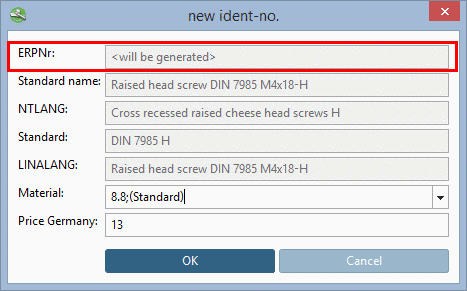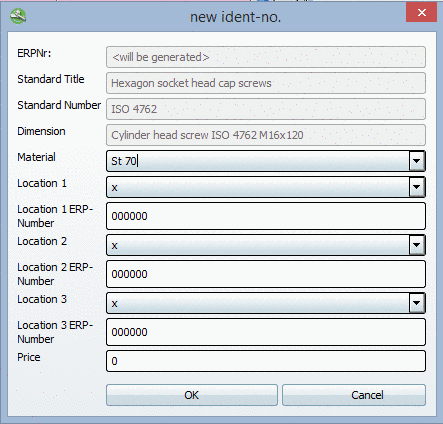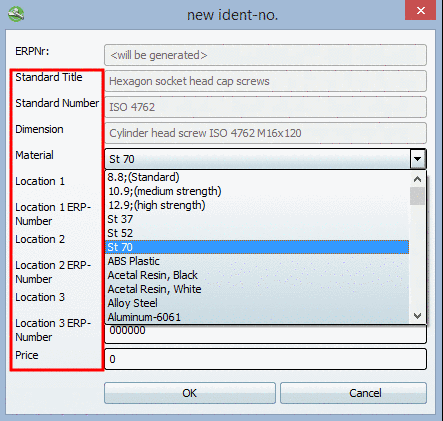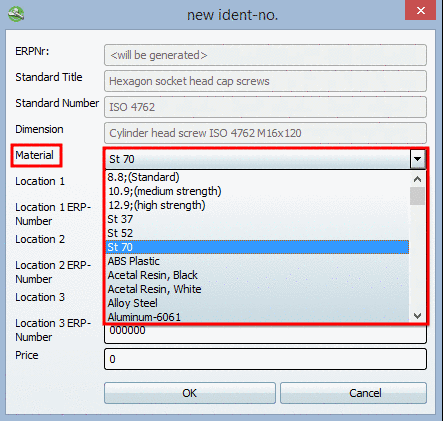Manual
Login
Our 3D CAD supplier models have been moved to 3Dfindit.com, the new visual search engine for 3D CAD, CAE & BIM models.
You can log in there with your existing account of this site.
The content remains free of charge.

Top Links
Manual
What is the structure of the dialog?
Concerning key naming, oriente at general variable names such as NTLANG, NN, LINALANG, NB or LinkDB variable names.
For each key a list of values has to be specified.
In the following the field values (separated be the character defined under "SEPARATOR") are listed.
-
(in order to avoid any problems, normally use the key name again here)
-
selectionfile: File (e.g. material_assign.cfg) containing options, which are displayed in a combo box.
Exemplary content of the stated file:
[*] 0= 1=8.8 2=10.9 3=12.9
For a certain standard number, other default values may be defined as well.
Exemplary content of the stated file:
[norm/din_en_iso/stifte/scherstifte/din_1.prj] 1=1.4301 (V2A) 2=1.4571 (V4A)
Also see Abschnitt 4.11.2, „erpcustom.cfg -> Block [dialogOnExport] - Automatische Generierung der ERP-Nummer: Exportdialog für Werkstoff und andere Felder ja/nein“.
-
Only numbers allowed (no comma)









